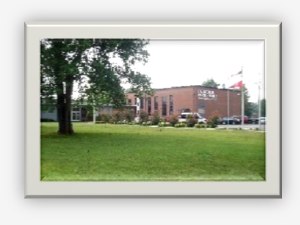 Sixth-grade mathematics and science teacher and NASA Explorer Schools educator Chick Knitter and the staff of Hobgood Elementary School in Murfreesboro, Tenn., have developed a unique and exciting challenge for their 400 students — walk to the moon!
Sixth-grade mathematics and science teacher and NASA Explorer Schools educator Chick Knitter and the staff of Hobgood Elementary School in Murfreesboro, Tenn., have developed a unique and exciting challenge for their 400 students — walk to the moon!
The students’ challenge is to walk 235,000 miles collectively, the distance from Earth to the moon. The staff tallies all students’ laps around the school’s quarter-mile track. To “get to the moon,” students will need to complete one million laps. The updates on miles are given weekly on the school’s TV webcast as well as a monthly “Moon Fact.”
The school had a kick-off for the Walk to the Moon Challenge this fall with Dr. Rhea Seddon. She is a former astronaut who lives in the area and is serving as the Grand Marshall. They hope to finish with the challenge by the end of the school year but will continue until they reach their “lofty” goal. Seddon plans to return to the school when the challenge is near completion and walk the last mile for the school as part of the closing ceremony.
This challenge encourages students to stay healthy as well as learn about NASA, space and reaching their goals. What a great idea!
 One of the most frequently asked questions of astronauts is about how and what they eat while in space. Expedition 26 Commander Scott Kelly recently made an informative video aboard the space station showing the food and beverage area, how food is prepared, menu options, and how they eat.
One of the most frequently asked questions of astronauts is about how and what they eat while in space. Expedition 26 Commander Scott Kelly recently made an informative video aboard the space station showing the food and beverage area, how food is prepared, menu options, and how they eat. One of the most frequently asked questions of astronauts is about how and what they eat while in space. Expedition 26 Commander Scott Kelly recently made an informative video aboard the space station showing the food and beverage area, how food is prepared, menu options, and how they eat.
One of the most frequently asked questions of astronauts is about how and what they eat while in space. Expedition 26 Commander Scott Kelly recently made an informative video aboard the space station showing the food and beverage area, how food is prepared, menu options, and how they eat.
 Have you ever wondered what various geographic locations on Earth would look like from space?
Have you ever wondered what various geographic locations on Earth would look like from space? 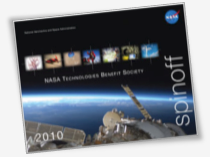 Each year, NASA produces a publication that highlights NASA spinoff technologies. Its articles show ways NASA research and technology have impacted our world. NASA Explorer Schools teachers can use these very interesting features when presenting NES modules. Students looking for a research topic or possible project area may find one of the spinoffs to be the perfect topic.
Each year, NASA produces a publication that highlights NASA spinoff technologies. Its articles show ways NASA research and technology have impacted our world. NASA Explorer Schools teachers can use these very interesting features when presenting NES modules. Students looking for a research topic or possible project area may find one of the spinoffs to be the perfect topic.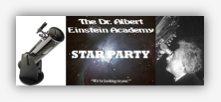 On the clear autumn night of Nov. 19, approximately 250 students and parents at
On the clear autumn night of Nov. 19, approximately 250 students and parents at 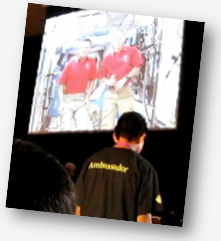 As a result of student interest generated by a recent NASA downlink at Johnston Middle School, NASA Explorer Schools educator Lanena Berry reports the school has instituted a Space Explorer’s Club. So far this year, club members have researched the SPHERES satellites on the International Space Station. Students have been introduced to NASA’s website and participated in the NES module,
As a result of student interest generated by a recent NASA downlink at Johnston Middle School, NASA Explorer Schools educator Lanena Berry reports the school has instituted a Space Explorer’s Club. So far this year, club members have researched the SPHERES satellites on the International Space Station. Students have been introduced to NASA’s website and participated in the NES module,  International Space Station EarthKAM is a NASA-sponsored project that provides stunning, high-quality photographs of Earth taken from the space shuttle and the space station. Since 1996, EarthKAM students have taken thousands of photographs of Earth by using the World Wide Web to direct a digital camera on select spaceflights and, currently, on the space station.
International Space Station EarthKAM is a NASA-sponsored project that provides stunning, high-quality photographs of Earth taken from the space shuttle and the space station. Since 1996, EarthKAM students have taken thousands of photographs of Earth by using the World Wide Web to direct a digital camera on select spaceflights and, currently, on the space station. Wouldn’t it be great to have a stop-action camera that could document the growth of your students’ plants in the NASA Explorer Schools module, Lunar Plant Growth Chamber? What might be other possible classroom uses for such a camera?
Wouldn’t it be great to have a stop-action camera that could document the growth of your students’ plants in the NASA Explorer Schools module, Lunar Plant Growth Chamber? What might be other possible classroom uses for such a camera?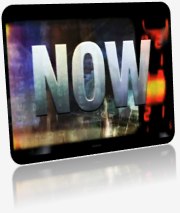
 NASA and the American Association for the Advancement of Science have teamed up to create a
NASA and the American Association for the Advancement of Science have teamed up to create a  Sixth-grade mathematics and science teacher and NASA Explorer Schools educator Chick Knitter and the staff of Hobgood Elementary School in Murfreesboro, Tenn., have developed a unique and exciting challenge for their 400 students — walk to the moon!
Sixth-grade mathematics and science teacher and NASA Explorer Schools educator Chick Knitter and the staff of Hobgood Elementary School in Murfreesboro, Tenn., have developed a unique and exciting challenge for their 400 students — walk to the moon!